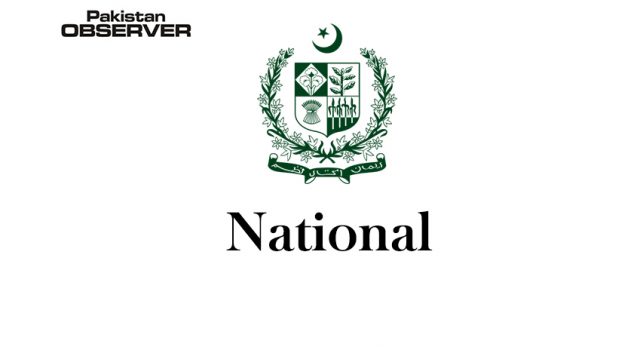Breaking the Glass Ceilings
IT is often said that each time a woman stands up for herself, without knowing it possibly, without claiming it, she stands for ALL women.
Many taboos and barriers of the judicial system of Pakistan were melted down on the freezing day of 24th January, 2022 when Justice Ayesha A. Malik was sworn in as the first female judge of the Supreme Court in the history of Pakistan.
Hers was the courageous voice that took a bold stand about the virginity test in rape cases, categorizing it as an offense to the dignity of the victim.
By her selection at the apex court, she has touched a remarkable milestone. Her elevation as a Supreme Court judge is a rare victory after decades of struggle for women empowerment.
Her appointment is of much significance as it is about breaking the glass ceilings, the shackles of patriarchy and gender stereotypes. Moreover, it’s about exposing hope to twelve million uneducated girls in Pakistan.
It’s about improving the fortunes of the female population and empowering them to become equal contributors in the economic, political and social progress of the country. Her promotion personifies and catalyzes confidence to the uneducated girls who are trapped in a vicious circle of poverty, inequality, cultural taboos and religious perceptions.
The 2019 Women, Peace and Security index ranked Pakistan at 164 out of 167 countries above only Syria, Afghanistan and Yemen, in terms of women’s safety.
Education is considered as the most powerful equalizer to bring about change and development. Pakistan has been struggling to achieve gender equality in education.
Pakistan ranks 153 out of 156 in the Global Gender Gap Report and accordingly 53.6% of the girls are deprived of education.
Girls from poor and conflict stricken communities, living in remote, rural areas are especially vulnerable. The false notion that investing in girls’ education does not result in the economic uplift of families, deters parents from sending girls to school.
Poor economic conditions of families result in their inability to cover the hidden cost of schools and thus force many girls to help with income generating or household chores.
The challenges to girls’ education are colossal and span over acute poverty traps and complex cultural barriers.
A few years ago, some school organizations decided to ban ‘I Am Malala’ a memoir written by Malala Yousafzai, a teenager shot by the Taliban for going against the current and choosing to go to school despite the Taliban warning her and her peers not to.
Now again the controversy of including a picture of education activist Malala Yousafzai in a list of important personalities in textbooks is expressive enough of cultural anathemas and social intolerance attached with girl’s education in this part of the world.
What works in girl’s education? Evidence and policies from the developing world advocate that investment in girls’ education has a clear rectilinear linkage with the development of nations.
The world cannot afford not to educate its girls. It is most significant to improve health, prosperity, and security. The true investment is to start investing in books, in education, and in prospect for girls who will reach and stay in schools.
The cultural norms to force girls to marry rather than go to school, to work rather than learn, needs deliberate and designed awareness campaigns on communal levels to magnetize and generate a secure milieu around.
The investment in girls’ education pays the best interest over the generations, and nations have substantial pieces of evidence supporting this.
The sheer scale of evidence in girl’s education investment is irrefutable. There are a few, if any, policy areas in the world where the evidence is so deep and sweeping as are the findings that support a far greater global commitment to girls’ education and investment.
Last year, Britain’s Foreign Secretary spoke about girls’ education and emphasized that a coherent international approach to gender equality is required.
Countless lives can be improved and this world can be an infinitely better place to live and nations summoned the will to make it happen; only one single step is required, “Make sure that all girls go to school.” Individual champions who best understand the regional dynamics of the particular communities must be empowered and authorized.
Although many parents are eager to send their daughters to schools they are weighing that fortune against fear and ambition against annihilation.
The legacy of Asma Jahangir, so close and indigenous to us, who bravely knocked on the Supreme Court of Pakistan, on the behalf of the undermined women of Pakistan, is being relived, in the corridors of the Apex Court, even today, breaking all glass ceilings.
When women are educated and empowered, the benefits are transferred to all social segments.
For every girl, basic education begins to unravel her future and higher education opens up new horizons to transform not only her life but the lives of her family and her community.
Let’s make a pledge and let’s give a chance to girls to fulfill their potential and make informed choices and menfolk need to embrace their active presence in all spheres. Since every great dream begins with a dreamer; so the every girlin Pakistan should start dreaming to rise and rise to her dreamt horizons.
—Writer is a public policy practitioner and women’s rights enthusiast










